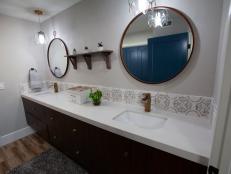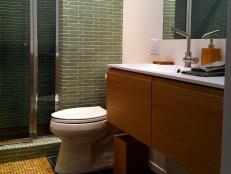Trending Now: The Bertoia Chair
It’s no accident that this timeless design recalls sculpture and even jewelry.

Arri Bertoia was born just over a century ago in a small northern Italian village. His artistic impulses showed themselves early: his sister recalled that as a young boy, he was more interested in drawing than in completing his chores, and brides-to-be commissioned him to design patterns for their wedding linens. By the time Arri was 15, his was outpacing his art teacher, who suggested the Bertoias send their spectacularly talented son to Venice — or America — for additional studies.

Arri moved to Detroit and became “Harry” — and continued to shine as a student. He received a scholarship to the Detroit Society of Arts and Crafts at 21, and at 22 he was invited to study painting at Michigan’s Cranbrook Academy of Art. Two years later, in 1939, Eliel Saarinen (the Finnish architect and father of Eero Saarinen) appointed Bertoia the head of Cranbrook’s metalworking shop. (Since metal was in short supply during World War II, Bertoia initially focused on jewelry, which demanded far less material.)

In 1943, Bertoia moved to California to continue work with Charles and Ray Eames, Cranbrook collaborators with whom he had worked on the molded and spliced plywood chair that had taken honors at MoMA’s “Organic Design in Home Furnishings” Competition in 1941. On the west coast, Bertoia helped the Eameses develop a process for mass-producing wood-laminate furniture — and, as with the award-winning chair for MoMA, received no credit for his contribution to that process.

design by Studio Schicketanz
That said, he benefited from his time in California and association with Charles and Ray, who encouraged him to take the welding class that would help him develop the ability to create an ergonomically innovative chair under his own name. When Florence Knoll, another Cranbrook friend, reached out to Bertoia to offer him $20,000 for two years of work in Pennsylvania, he headed back east to an unfinished shed at the Knoll plant and began to bend wire into his masterpiece. As Beverly H. Twitchell recounts in Bertoia: The Metal Worker, the absence of a proper metalworking shop at the Knoll facilities led Bertoia to a key realization — that is, "the fact that wire, if properly used, obtains a great deal of structural strength with an economical amount of bulk."

Anice Hoachlander/ Hoachlander Davis Photography
Bertoia’s iconic wire collection debuted at the Knoll showroom in 1952, and the rest, as they say, is history. His furniture has been in continuous production since 1953, and his financial arrangement with Knoll International allowed him to pursue his artistic interests for the next two decades. It also led to a collaboration with Eero Saarinen, who spied Bertoia’s sculpture beside his chairs and invited him to create an altar for the nondenominational chapel he was designing at MIT.

Andre Vippolis
Knoll celebrated what would have been Bertoia’s 100th birthday at its New York City showroom in 2015, where Glenn Adamson, the director of the Museum of Arts and Design, noted that he was the master of “bringing a line alive,” and “was everything all at once — not just the ability to think about design, meditate on form, envision what the future might look like — but actually to deliver it with [his] hands.” Adamson also noted that Bertoia “only had one or two ideas” — a contention that would be rather controversial among his fans — “but they were powerful ideas,” he concluded. Though Bertoia and Charles and Ray Eames parted ways early in their careers, in turn, evidence of their collaboration remains on both a public and a personal level: Bertoia designed Ray’s wedding band.

Photographer: Jeri Koegel, Photographer: Jeri Koegel
Happily, the hard feelings that surrounded the genesis of the Eames chair all those decades ago have softened into something else. Susan Saarinen, Carla (Eames) Hartman and Celia Bertoia — the daughter, granddaughter and daughter of Eero Saarinen, Charles and Ray Eames and Harry Bertoia, respectively — first met 12 years ago and appeared together in 2016 to discuss their relatives’ work for Modernism Week at the Palm Springs Art Museum. Celia Bertoia founded and serves as the director of the Harry Bertoia Foundation, and through lectures, interviews and a 2015 biography, she’s dedicated herself to keeping all of her father’s design legacy alive.

Madeleine Lenke
A new Bertoia wire barstool now costs about $1,300, and isn’t quite a carbon copy of its 1950s predecessors: “to state the obvious,” as former Knoll Senior Industrial Designer Bill Shea puts it, “nearly all products that have been in production for over 63 years undergo evolutionary changes over time.” Despite those variations — particularly the increase in wire diameter associated with a 1986 shift to production in Italy — Shea maintains that it’s pretty easy to spot the genuine article. “It’s quite instructive to simply Google ‘Bertoia furniture knock-offs’ and compare with pics of the real Knoll chairs.”


















































